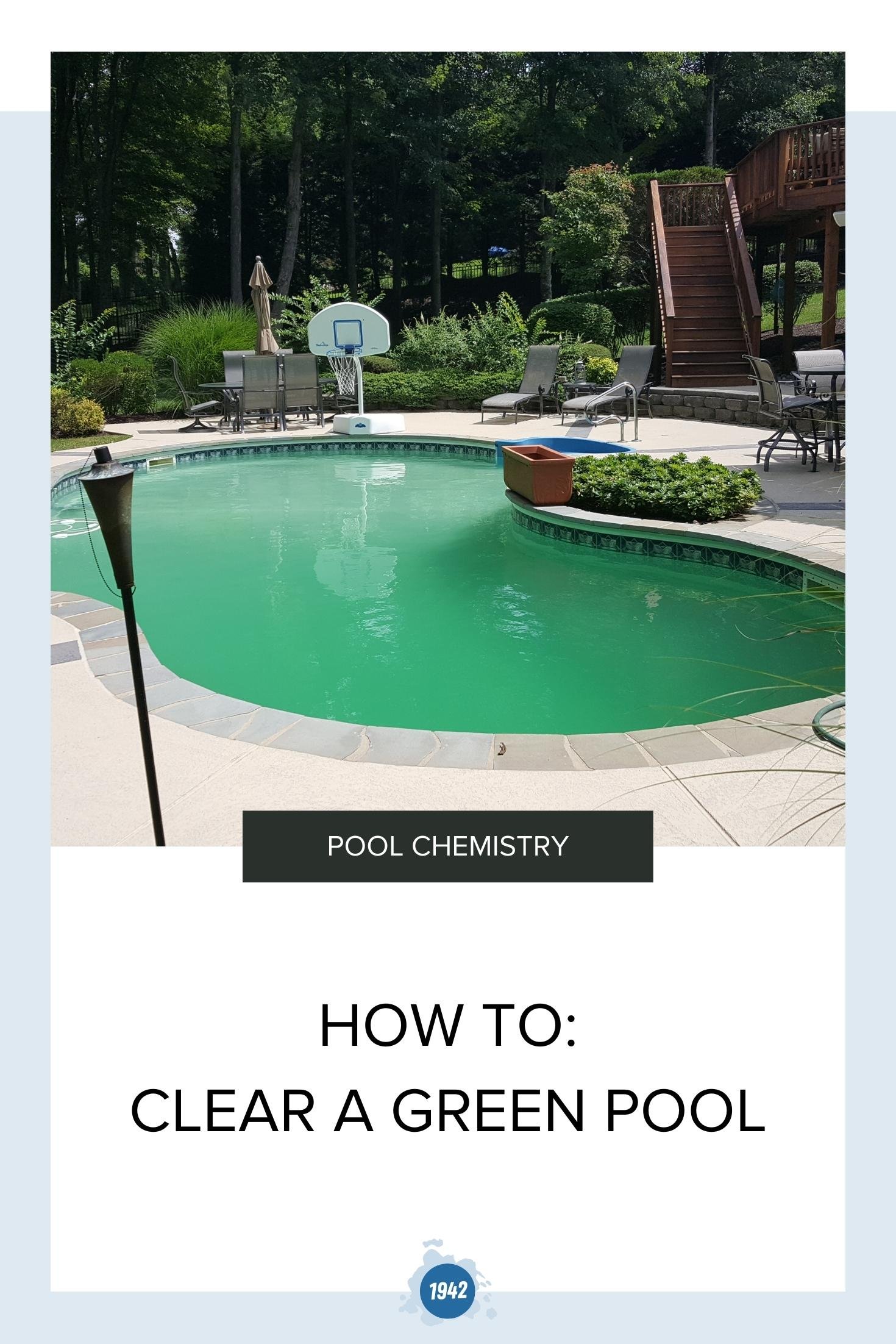CLEARING A GREEN POOL
Clearing a green pool is probably one of the most frustrating parts of pool ownership. Even the most diligent pool owners can suffer with pool algae. We’ve been clearing green pools and helping pool owners clear green pools for a long time, so we know first hand the gut-wrenching feeling that can overcome you when you lay your eyes upon a green, swampy unsightly mess.
Just remind yourself that it’s temporary, and be patient! Clearing a green pool does not happen overnight; it takes time, patience, and a little bit of elbow grease.
Read on to find out how to get rid of green pool water for good.
The first thing you need to do is to test your waters pH level. If your pH test reading shows the pH is too high (above 7.6), you’ll need to add pH decreaser to lower it. If the pH is too low (below 7.2), add pH increaser to raise it. It’s important to address your pH level first because your pH has a direct impact on how effective your chlorine will be and between 7.2 and 7.6 is ideal.
If it is an issue for you to calculate the amount of chemicals you need to add to your pool based on your test results, we can help there too. Bring in a fresh water sample and our chemical experts will be glad to assist in testing your water and walking you through the steps to bring your pH into range and ultimately help you clear up your pool.
After testing and adjusting any pH level imbalance, brush the sides and bottom of the pool thoroughly to loosen any algae that have become attached. Scrub off anywhere that algae has accumulated with a pool brush. Be diligent here to ensure that no algae are left sticking to the sides of the pool or tucked away in the corners. When you have finished brushing thoroughly,
the simplest way to kill algae is to shock your pool with calcium hypochlorite. You want to utilize a fast dissolving shock such as Browning Super Zappit (up to 16,000 gallons). Whichever shock you choose, make sure to follow the directions, and whatever you do, DO NOT just throw tablets, sticks, or pucks into your pool which most often lead to severe bleaching and staining.
After the proper amount of pool shock has been added, run the filtration system for a minimum of 24 to 30 hours straight; this helps to circulate the chlorine to kill off and oxidize the algae as effectively as possible. Vacuum the algae-ridden water manually through waste bypassing your filter getting rid of the contaminated water. Make sure to remove as much algae as possible, including sediment around the bottom and sides of the pool. (A floccing agent could be used at this point to sink all dead organics to the bottom of the pool for manual vacuuming. We’ll go over coagulants next week, so make sure to tune in.)
After circulating a minimum of 24 to 30 hours, if the pool is not yet clear, backwash, clean the filter and test the chlorine level. If the chlorine level is low, you still need to add an additional couple of pounds of shock to complete the cure because the contaminant level was very high. Additional filtering will also be required. Continue to monitor and adjust pH, Alkalinity, Calcium Hardness, & Chlorine throughout this process.
pH 7.2-7.6
Alkalinity 80-120 ppm
Calcium Hardness 200-300 ppm
Chlorine 1.0-3.0 ppm
Keep an eye on your water level; most likely you will need to add water to your pool. When all is said and done you want your water level to be halfway up your skimmers.
If there is cloudiness, or haziness still present after you have completed all of the above steps, more than likely this is caused by dead algae or mists of particles suspended in your pool water.
You will need a coagulant agent, like clarifier or flocculant, to bind these tiny particles into larger clumps so that your filter can collect them or be flushed to waste.
When you decide to open your pool may be one of the most significant factors in determining whether or not you’ll find algae lurking under your cover at opening. It doesn’t matter if we are opening your pool or you’re opening it yourself, earlier is ALWAYS better, and no matter what if you need us, we are here to help.

